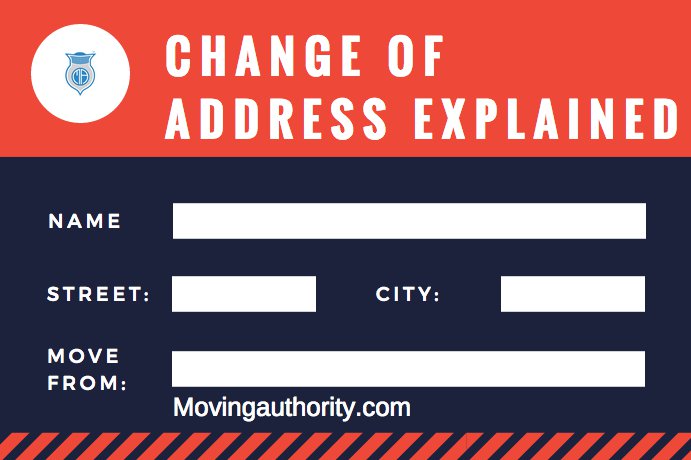Post Office Change of Address

- How Can We Be Expected to Remember Everything?
- Some Forgotten Reminders During the Move
- Change Your Address Without All the Hassle
- Don't Forget to Change Your Address at the USPS Mail Service!
- Simple Step-by-Step Guide to Changing Your Address & Where To Do It
- How Do I Change My Address with the Post Office?
- Do I Really Need to do All of This & Move at the Same Time??
- Don't Forget Your Biggest Fans! Friends & Family!
- We Understand What a Chore This Can Be With So Many Tasks
- We're Here to Help Along the Way: Communication is Key
1. How Can We Be Expected to Remember Everything?
When you move, there are many tasks to complete. From the beginning of the moving process, all the way to the end of your move, there are so many things that need to get done. Many people take on too many tasks at once when moving, meaning they often have to take it on alone or with a little help.
2. Some Forgotten Reminders During the Move
Because there is so much to do during the moving process, it is often difficult for people to remember everything that must be done. Doing everything alone complicates the process more. People who are moving these days are always looking for simpler ways to do things. With the rise of modern technology, completing moving objectives such as a post office change of address is becoming easier than ever before. People can now change their address with the post office by:- Picking up a change of address card
- Calling the post office
- Completing a simple online form
3. Change Your Address Without All The Hassle
With so many factors to consider during the process, it's easy to become overwhelmed. So, it's plain to see how people can forget to do something so simple, like changing their address at the Post Office. A traditional option to change your address is to visit your local Post Office and request a Mover’s Guide packet - PS form 3575.When you file a change of address with the postal service, you are letting them know that you have moved. Once you've changed your address, the USPS will send your future service usps mail to your most up-to-date place of residence. The process of letting them know is almost too simple. All you have to do is fill out a usps change of address form online, and submit the paperwork for address mailing.
4. Don't Forget to Change Your Address At USPS postal service
4. Don't Forget to Change Your Address At USPS postal service
Many people still forget to submit a USPS change of service address form, post moving to other states. This is rather ironic, considering that any change of address checklist will remind you to submit a post office mailing change address. When you do this, you are avoiding any annoyances or inquiries about verifying your address from anyone and everyone who sends your mail. Many people are fooled into believing that a post office change address online is all that is required to ensure the mail gets sent to your new home. Unfortunately, that is not enough and there are countless places that need this guide to change the address once you move or you will get hold mail. The post office can hold your mail for up to 30 days. Once your Change of Address Form has been submitted, it typically takes the postal service about 7-10 postal business days to process your USPS mail forwarding request.


5. A Step-by-Step Guide to Changing Your Address & Where To Do It
Moving Authority has taken the liberty of compiling an address change checklist to changing your address request. This should be used when your move details are set to keep everybody up to date with your new address.
So, the Question is: Where Should I Change My Address?
So, the Question is: Where Should I Change My Address?
Below is a list of all the places you will want to remember to notify regarding your move and change of address:
- Banks and Credit Card Companies
- business employers
- utilities, phone, cable providers
- doctors, dentists, other medical providers
- insurance companies (health, home, car)
- your children's school
- your children's doctor, sister, pedicurist, and anybody else you pay
- vets and kennels
- delivery subscriptions
- billing agencies
- family and friends
- online retailers
- post office!

6. How Do I Change My Address with the Post Office?
Updating your home address with the post office is easy: head to a post office to submit a change of address form. You can also fill out an online form with a few clicks. The USPS has made this process easier than ever, so there should be no hangups in changing your address. Provided that all required conditions are met, voter registration may be conducted on Postal Service property only with the approval of the Postmaster or installation head.
7. Do I Really Need to do All of This & Move at the Same Time??
Some of these things may not seem very important, but it's imperative that you change your address. Even with paperless billing and online subscriptions, an updated address is crucial. You should at least update your zip code on websites that deliver weather and news. Customers can look up ZIP codes and verify addresses using USPS Web Tools available on the official USPS website and Facebook page, as well as on third-party sites. Making an address change at the post office is one of the most important changes you will have to make when moving. Without updating it you would not be receiving mail.
8. Don't Forget Your Biggest Fans! Friends & Family!
If you want to let your friends and family know that you have changed your address, you can do so with a few easy steps. You can notify them via Facebook or text message. You can also print out little address labels so you can give them to people when you see them but fees may apply. Have the kids help you make them for a cute arts and crafts project!
9. We Understand What A Chore This Can Be
If all this seems too hard for you, we completely understand. You are not alone. The reality is that many people today don't have time to worry about things like this. This is especially true when you are moving, and dealing with the stress that a transition can bring and it makes you question the pros and cons. That is why the internet has created websites which update all information for you. These sites will update your address with all the places that you choose. This way, you can manage your subscriptions, bank accounts, kids' schools, etc. with only a few clicks. More details here.
10. We're Here To Help You Along The Way: Communication is Key
Moving Authority is happy to help you with all your moving needs. Giving you post office change of address information and lists is just one way that we help you move with ease. If you want to find out more about getting your truck license to move follow the link.
Comments
Bob Kings
Feb. 23, 2022, 12:38 a.m.
I was told that I need US post office change address form but it is the united states post office change address online correct. Thank you for your time.
Alyssa Y.
Feb. 23, 2022, 12:38 a.m.
Thank you for the information about changing post office address. It really helps when I move home. I have a question though. I am not sure what to do with moving boxes once they are unpacked. It would be great if you could help me answer this question.
Cindy Kistler
Feb. 23, 2022, 12:38 a.m.
Excellently written article, if only all blogger offered the same level of content as you, the internet would be a much better place. Please keep it up!. Great tips, I would like to join your blog anyway.Waiting for some more review.Thank you
Add Comment